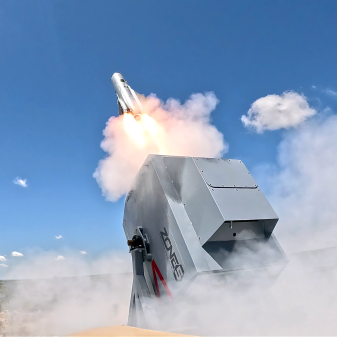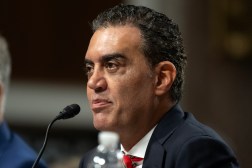For next phase of DIU, Beck envisions stronger partnerships across Pentagon

The impending next phase of the Defense Innovation Unit — dubbed DIU 3.0 — will likely see the organization deepening its collaboration efforts with the military services and other Pentagon offices in order to more efficiently scale commercial technologies for warfighters, according to Director Doug Beck.
Since taking the helm of DIU in May, Beck has hinted that the Pentagon’s commercial-to-military tech incubator is preparing to move to a “phase three.” While previous phases first saw the organization shakily get off the ground and then work to prove commercial technologies could solve some of the military’s problems, DIU 3.0 will focus on scaling those capabilities across the Defense Department for strategic effect, Beck said Tuesday during a fireside chat at the NDIA Emerging Technologies for Defense conference and expo.
That means DIU needs to strengthen collaboration efforts across the Pentagon, he said. He compared the organization to a fiddler crab, with the larger claw having a firm grip on what’s happening in the commercial technology sector and the smaller claw in the Pentagon.
“When the main thing that you’re doing is finding those great technologies and serving them up, that’s good enough,” Beck said. “But when you’ve got to be truly partnered … with the combatant commander, embedded and partnered with the services, embedded and partnered in the right ways with our partners in [the Office of the Secretary of Defense] and the Joint Staff — then you’ve got to grow that other claw.”
Beck’s team just completed a comprehensive report for Secretary of Defense Lloyd Austin that outlines the purpose of DIU 3.0 and the role the next phase will play in catalyzing innovation across the U.S. military.
He noted that because DIU now reports directly to the secretary of defense, the organization will be in a better position to collaborate with other components of the department. He cited two examples where he thinks having DIU employees “embedded” would make an impact: directly with combatant commands that are in need of new technologies, and with Pentagon organizations associated with acquisition in order to push for systemic change.
“We’ve got to turn that on its head so that we are completely embedded at the right levels in the departments,” he said.
DIU has already begun some initial collaboration efforts. The organization will embed someone at U.S. Indo-Pacific Command to serve as the deputy director and chief technology officer for the new Joint Mission Accelerator Directorate, Beck said.
Announced on Monday by Indo-Pacom Commander Adm. John Aquilino, the program is intended to bring officials and assets from the Pentagon to help Indo-Pacom scale emerging tech.
During a meeting with reporters at the conference, Beck told DefenseScoop that DIU has already sent a liaison officer to the combatant command and will continue to add others from the organization to that team. DIU also has people embedded in U.S. European Command and elsewhere, he added.
“The important thing here is this is going to be all in tandem with our partners across the department,” he said. “It’s about catalyzing the team together to get after this, and we’ll have team members who are in a number of different places all working together to help do that.”
Beck also emphasized the importance of having DIU working with international partners and allies. He said having those relationships will be critical to the unit’s next phase.
“That’s partly about harnessing the capabilities of great companies that might exist in those different places for solving our problems,” Beck said. “It’s also about providing a broader sandbox for our own innovative companies to be able to go and make a difference to that shared strategic need, and at the same time have a broader platform from which to deliver returns for their investors and their funders.”






